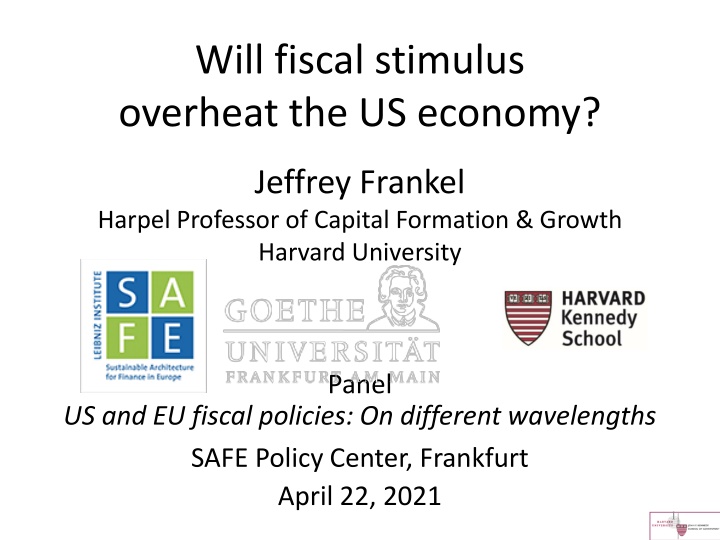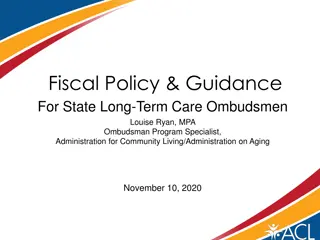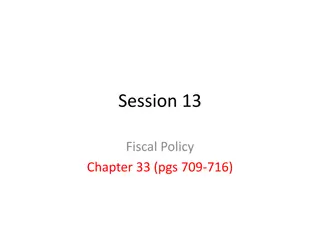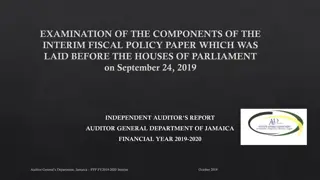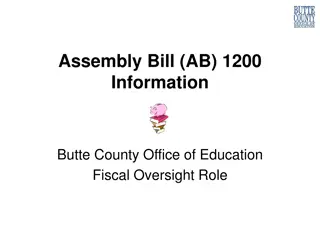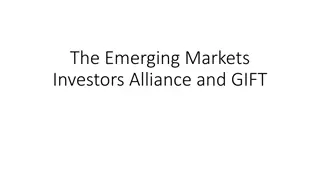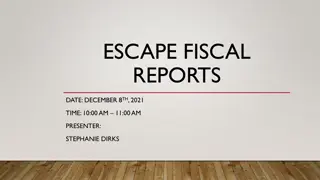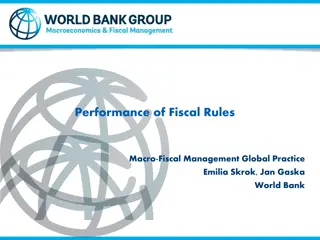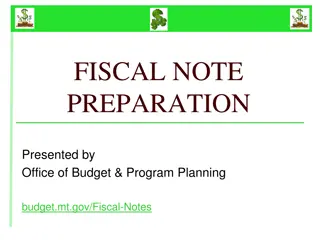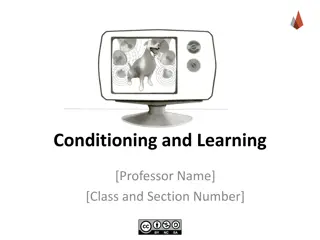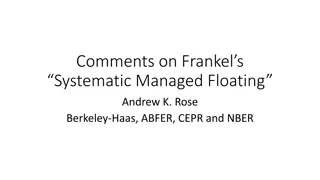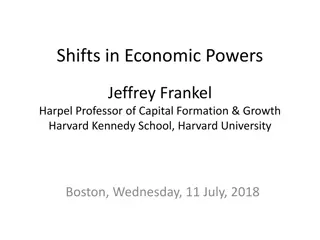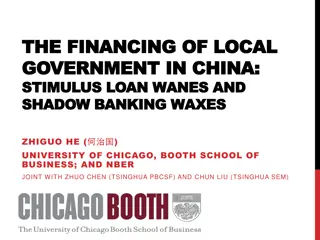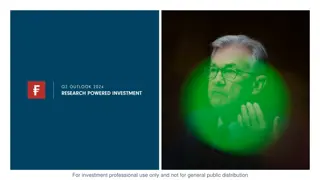Potential Impact of Fiscal Stimulus on the US Economy: Insights by Jeffrey Frankel
Jeffrey Frankel, Harpel Professor at Harvard University, discusses the likelihood of the US economy overheating due to recent fiscal stimulus measures. He highlights the significant relief packages passed by Biden, potential GDP increases, and the possibility of GDP surpassing its potential, raising concerns about overheating. Contrarian views on inflation and the Phillips Curve suggest a nuanced outlook. Frankel projects GDP surpassing its potential in 2022, but inflation may remain in check.
Download Presentation

Please find below an Image/Link to download the presentation.
The content on the website is provided AS IS for your information and personal use only. It may not be sold, licensed, or shared on other websites without obtaining consent from the author.If you encounter any issues during the download, it is possible that the publisher has removed the file from their server.
You are allowed to download the files provided on this website for personal or commercial use, subject to the condition that they are used lawfully. All files are the property of their respective owners.
The content on the website is provided AS IS for your information and personal use only. It may not be sold, licensed, or shared on other websites without obtaining consent from the author.
E N D
Presentation Transcript
Will fiscal stimulus overheat the US economy? Jeffrey Frankel Harpel Professor of Capital Formation & Growth Harvard University Panel US and EU fiscal policies: On different wavelengths SAFE Policy Center, Frankfurt April 22, 2021 1
Will the US economy overheat? Reasons to think so: Biden s $1.9 trillion relief package (American Rescue Plan) + infrastructure bill, $2.3 tr., 10 years (American Jobs Plan); coming on top of big transfers in 2020, + pent-up demand ($ 1 - 2 trillion extra savings), + aggressive Fed stimulus. My bottom line: US overheating is very likely, if defined as GDP > potential. Less likely, if it is defined as inflation above what the Fed wants. 2
The basic multiplier logic is simple as laid out by Summers in his W.Post column, Feb.4. The Keynesian multiplier normally is high when interest rates & inflation remain low. Call the multiplier 1.0, since some of the transfers will again be saved & long-term interest rates may rise. 10-yr rate has already risen since January, to 1.6%. 1.0 x $1.9 trillion = $1.9 trillion = 9 % of GDP. GDP at end-2020 3 % below estimated potential. => 9% boost would put GDP 6 % above est. potential. Even a 0.5 multiplier would put us 1 % above potential. 3
CBO-estimated output gap GDP 1 % above potential in 2019. GDP 10 % below potential, 2020 Q2. 4
Stimulus puts GDP above potential by end-2021. US GDP 3 % below potential at end-2020. } Committee for a Responsible Federal Budget, Feb. 2, 2021
Planned 2021 stimulus in US >> in Eurozone or Japan. 6 OECD, March 9, 2021
Major counterargument: We may be underestimating potential GDP. <= inflation did not rise much in 2018-19, when GDP was 1% above potential & unemployment fell as low as 3 %. But a better explanation is a flat Phillips curve. After all, inflation also didn t fall very much 2010-14, even though output was still below potential, & unemployment was declining only slowly from its 10 % peak. Hence my conclusion that, though 2022 GDP will rise above potential, it is less likely that inflation will rise above what the Fed wants. 7
Other possible downsides to so big an expansion, aside from inflation. Net national debt/GDP > 100%, highest since 1945. Unsustainable path, if interest rates rise. But less of an issue for US than other countries especially EMDEs. If the Fed succeeds in keeping interest rates low, it may prolong asset market bubbles. The trade deficit will rise, which could exacerbate protectionism.. . Much depends on how the money is spent. Mostly, it looks to be well-spent, even though not all the infrastructure spending is really infrastructure. 8
US debt/GDP was set to exceed 100% in 2021, even before the Biden stimulus. 9 CBO, Sept. 2020
The mistake of 2009 Obama s $0.8 trillion stimulus was too little & too short-lived. It did help end the GFC recession in 2009 Q2; but the recovery was too slow. En I m not sure it was Obama s mistake: It was the most he could get through Congress, given Republican opposition. Regardless, Biden is now making sure that theUS doesn t repeat the mistake. 10
Will fiscal stimulus overheat the US economy? Jeffrey Frankel Harvard University 11
Appendix: Obama stimulus helped end recession in 2019. But subsequent recovery was slow. Level of GDP, monthly (Jan. 2007-Dec. 2011), estimated by Macroeconomic Advisers 13,600 Obama inauguration 13,400 End of recession (billions of chain-type (2005) dollars seasonally 13,200 adjusted at annual rates) 13,000 Real GDP 12,800 12,600 12,400 12,200 2007 2008 2009 2010 2011 Source: Macroeconomic Advisers www.macroadvisers.com
End of recession Obama inauguration 13
Well-anchored expectations keep inflation stable. Source: Menzie Chinn, March 2021 14
Long-term interest rates rose after Jan. 2021. Adrian, et al, IMF, April 22, 2021 15 https://blogs.imf.org/2021/04/22/understanding-the-rise-in-us-long-term-rates/
Effect on other countries, 2021 Q2 2022 Q1 Laurence Boone, OECD, March 9, 2021. 16
